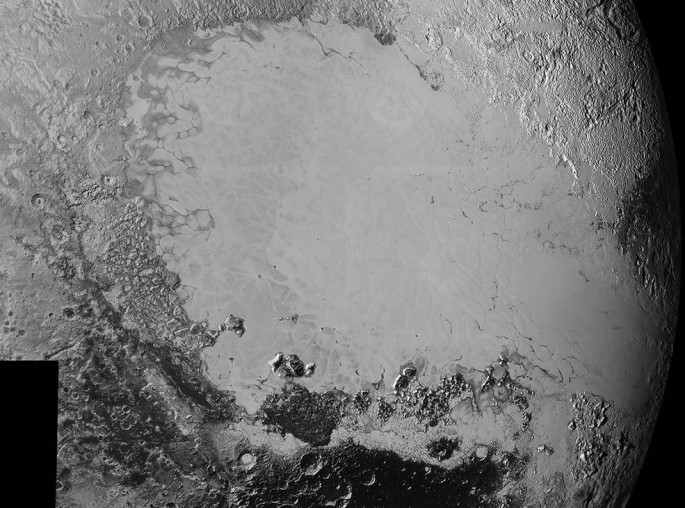NASA's New Horizons probe just revealed its latest closeup, high resolution images of Pluto, where mission scientists were surprised to see more complex and dynamic surface features over the dwarf planet's geology.
These images are first to arrive from the downlinking phase of the probe, where it will start its yearlong download of crucial data and images taken and conducted by New Horizons as NASA scientists reveal that Pluto's surface can now be viewed at 440 yard for every pixel. These new views provide unprecedented, spectacular surface topography, scientists say.
According to New Horizons Principal Investigator, Alan Stern from the Southwest Research Institute in Colorado, Pluto is now showing its diverse landforms and complex processes that rival anything seen in the solar system.
He adds that, if an artist were to depict how Pluto looked like before the flyby, these images can seem over the top, but since we know now, it's actually what's there.
Pluto at first seemed to be this distant, mysterious world but thanks to New Horizons, new data and images triggered a new scientific curiosity for the dwarf planet.
Apart from extremely tantalizing new images and data from Pluto, scientists also detected flows of nitrogen ice with a network flowing down to mountains and spreading out to plains, dunes and valleys that cover the surface of the alien world.
According to the Jeff Moore, head of the Geology, Geophysics and Imaging group at NASA's Ames Research Center, Pluto's surface is just as complex as Mars, where the randomly placed mountain ranges could also be huge blocks of hard water ice that are floating on a vast and dense, softer deposit of frozen nitrogen in the region called Sputnik Pallum.
Stern also adds that the best images and information are yet to come. The remaining 95 percent of data that is currently downloading will include the best data sets and highest resolution images, spectra and most crucial atmospheric data sets.



























